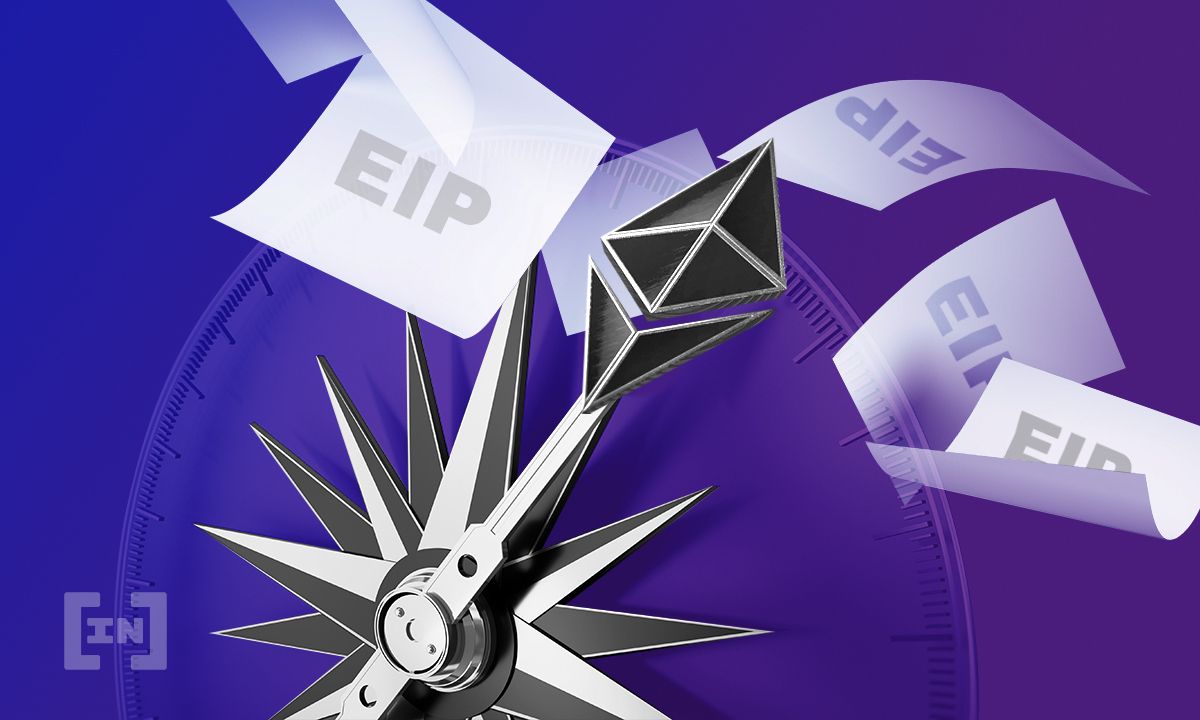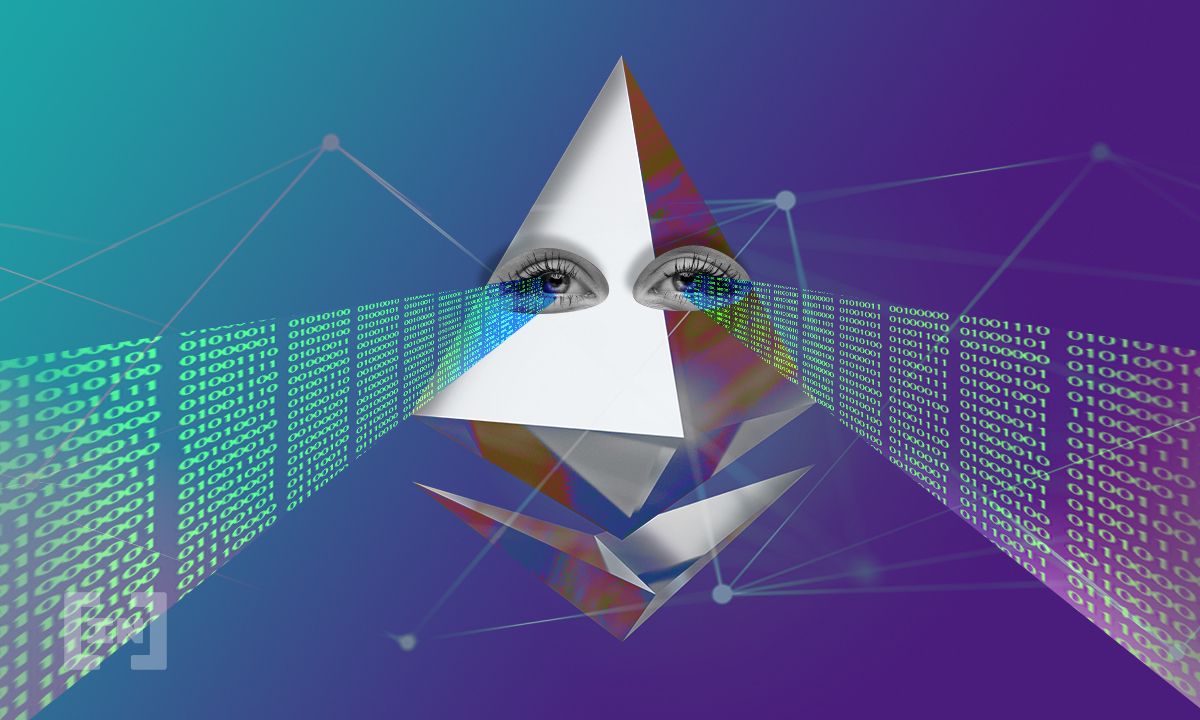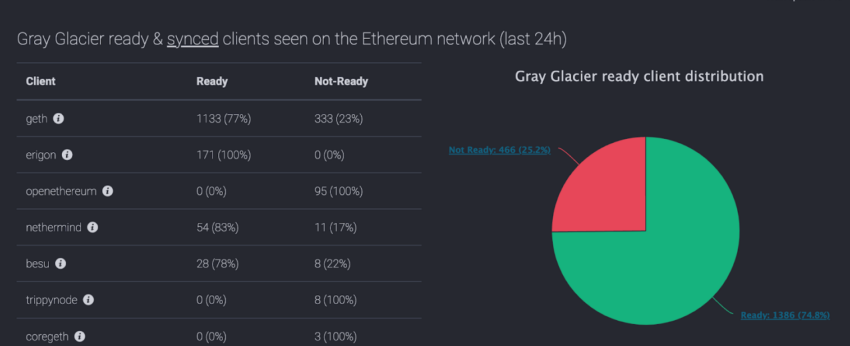Ethereum has released a new major network upgrade called Gray Glacier, pushing back the “difficulty bomb” by another 100 days. Here’s everything there is to know about the Gray Glacier Ethereum network upgrade.
Ethereum network upgrades

Network upgrades are changes to the underlying Ethereum protocol. New rules meant to improve the system accompany blockchain upgrades.
Since a network upgrade is more complicated due to the decentralized nature of blockchain systems, the entire community needs to be on board. To make a transition smooth, network upgrades in a blockchain network require communication and cooperation with the community as well as the developers.
Over the past year, Ethereum’s developers have made several Ethereum Improvement Proposals (EIPs) meant to find scalable solutions for the network. Some of the most controversial EIPs have been EIP-4488 and EIP-4844.
What is Gray Glacier?

The Gray Glacier Ethereum network upgrade took place on June 30, 2022, at block height 15,050,000. This upgrade represents a crucial transition step towards a proof-of-stake (PoS) Ethereum 2.0 (ETH 2.0).
What does the Gray Glacier upgrade mean for the network? This involves delaying the difficulty bomb by 700,000 blocks, which should take approximately 100 days. The bomb will not explode until around Oct. 2022. The upgrade includes the EIP-5133 proposal.
Gray Glacier is an Ethereum hard fork upgrade. It creates new rules to improve the network and requires that node operators and miners download the most recent version of their Ethereum clients.
According to the Ethereum Foundation, all miners and node operators have to manually upgrade to the latest client versions to participate in the new network. If they fail to do so, their “client will sync to the pre-fork blockchain once the upgrade occurs.”
Clients who fail to upgrade will be stuck on an incompatible chain following the old rules. They will be unable to send Ether or operate on the post-upgrade Ethereum network.
However, not all miners and node operators followed the recommendation. A few hours after the Gray Glacier went live, a significant part of the Ethereum clients had not upgraded their client version. Ethernodes data shows that only 74.8% of clients were ready for the Gray Glacier upgrade, after the upgrade went live on June 30.

What is the difficulty bomb?
The difficulty bomb increases the mining difficulty exponentially for the proof-of-work (PoW) Ethereum network until the Ice Age takes place. During the Ice Age, the network will cease to produce blocks. Miners will simply stop mining new blocks as the mining difficulty increases.
The Ethereum difficulty bomb is a mechanism that increases the difficulty of puzzles in the PoW mining algorithm for a predetermined number of blocks. This results in longer block times and fewer ETH rewards for miners.
As the network transitions from PoW, the goal is for miners to stop gradually mining the Ethereum 1.0 PoW chain.
Why the difficulty bomb is needed?
Well, the reasons are obvious: that’s how we ended up here with the Gray Glacier upgrade.
The difficulty bomb was coded into the protocol from the beginning. It was created to ensure that Ethereum 1.0’s core developers are forced by a hard fork to upgrade the network (if only to delay the effects of the bomb) so that innovation does not stagnate. At the same time, the difficulty bomb is meant to serve as a deterrent in case miners want to continue mining once the PoS has kicked in.
In other words, detonating the difficulty bomb would mean the actual transition (known as The Merge), is about to take place. This merge with the beacon chain has already undergone multiple testnet integrations. Vitalik Buterin and other developers stated that “if all goes according to plan,” the transition could occur as soon as Aug. of this year.
The difficulty bomb was delayed because the coordination of the mainnet implementation of The Merge between the PoW and PoS hasn’t been planned yet. If the bomb had not been delayed, then Ethereum 1.0 may become impossible to mine before ETH2.0 was ready. Several delays, including five network upgrades, pushed the Difficulty Bomb back. These were Byzantium and Constantinople, Muir Glacier, London, and the most recent one was the Arrow Glacier upgrade, in Dec. 2021.
What should I do after Ethereum’s Gray Glacier upgrade?
Ethereum users don’t need to take any specific action. However, if exchanges or wallet service providers request changes, they will have to follow those instructions. Many cryptocurrency exchanges have shown support for the Ethereum network upgrade and have suspended withdrawals and deposits during the Gray Glacier upgrade.
However, node operators must update their client versions to be compatible with Gray Glacier’s upgrade. Node operators and miners who don’t perform the upgrade will remain on an incompatible chain that follows the old rules. Therefore, they will be unable to send Ether or operate on the new post-upgrade Ethereum network.
When will PoS arrive?
We’re almost there. According to Tim Beiko, Ethereum Protocol Support, the Gray Glacier is “hopefully” the last extension of the difficulty bomb. This means that Ethereum 2.0, aka a proof-of-stake (PoS) Ethereum, is only a few months away.
If you want to learn more about Ethereum and the upcoming changes, join the BeInCrypto Telegram group. The friendly folks there will explain everything to you.
Frequently asked questions
What are Ethereum upgrades?
What is the Ethereum Gray Glacier Upgrade?
What is the next Ethereum upgrade?
Disclaimer
In line with the Trust Project guidelines, the educational content on this website is offered in good faith and for general information purposes only. BeInCrypto prioritizes providing high-quality information, taking the time to research and create informative content for readers. While partners may reward the company with commissions for placements in articles, these commissions do not influence the unbiased, honest, and helpful content creation process. Any action taken by the reader based on this information is strictly at their own risk. Please note that our Terms and Conditions, Privacy Policy, and Disclaimers have been updated.




